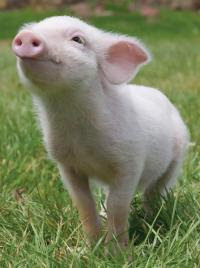Although it may disappoint my fans, this is the fourteenth post of my passion blog and I am RUNNING OUT OF STORIES.
I know, this is kind of a tragedy, but I’ll be sure to bring back photos and do cool things over Spring Break.That being said, I will be posting about cities I would really like to visit in the future, starting with Budapest.

In my research on Hungary I found an article entitled “9 Culture Shocks Americans will have in Hungary,” that was both amusing and informative. Most of the bullet points were really to be expected, like #2 “Everybody smokes.” Anyone who has ever been to or heard anything about Europe already knows that it is a time portal back to 1950’s America. #3 doesn't really worry me either, “Food reigns supreme over anything and everything,” in that it describes the sanctity of every mealtime as an event to be looked forward to and savored.
There were, however, some points that made me raise an eyebrow. #1, entitled “The disznóvágás,” which roughly translates to “pig slaughter.” Now, although I do not advocate the goriness of killing animals, I was intrigued because I have heard such wonderful things about Hungarian meats.
A word of advice: do NOT google disznóvágás. It’s a bloody mess. Just eat the sausage and don’t ask where it comes from.
I also liked tip #6, “Get used to pessimism, straightforwardness, and the Hungarian temper.” Attributing the sour Hungarian temperament to “relentless invasions and occupations” by the Mongols, Turks, Habsburgs, Germans and Russians alike, the article states that casually asking “How are you?” will more likely start an argument rather than a conversation.
Moving on from this article, I was interested by the Buda Castle, located in the heart of Budapest and on the shore of the Danube River.
The Buda Castle is interesting for a number of reasons, the earliest of which is that it’s original structure “disappeared.” I kid you not, it was last seen in the year 1243, until Hungary was invaded by the Mongols, who destroyed it so well that no remains of the palace were ever found.
Luckily, it was rebuilt even bigger and better in the same exact spot. Completed in 1356, the Buda Castle was, at the time, the largest and grandest castle in all of Europe. From there, Hungarian and Habsburg kings added onto it. Destroyed by Turks in the late 1500’s, and then set on fire in the 1800’s, it’s a miracle that the castle exists today as a building over 1000 feet long with over 6 wings.
Because of all the trauma it has undergone, the building itself is described by a few articles as “austere” and “devoid of ornamentation,” but... I’d still visit.



No comments:
Post a Comment